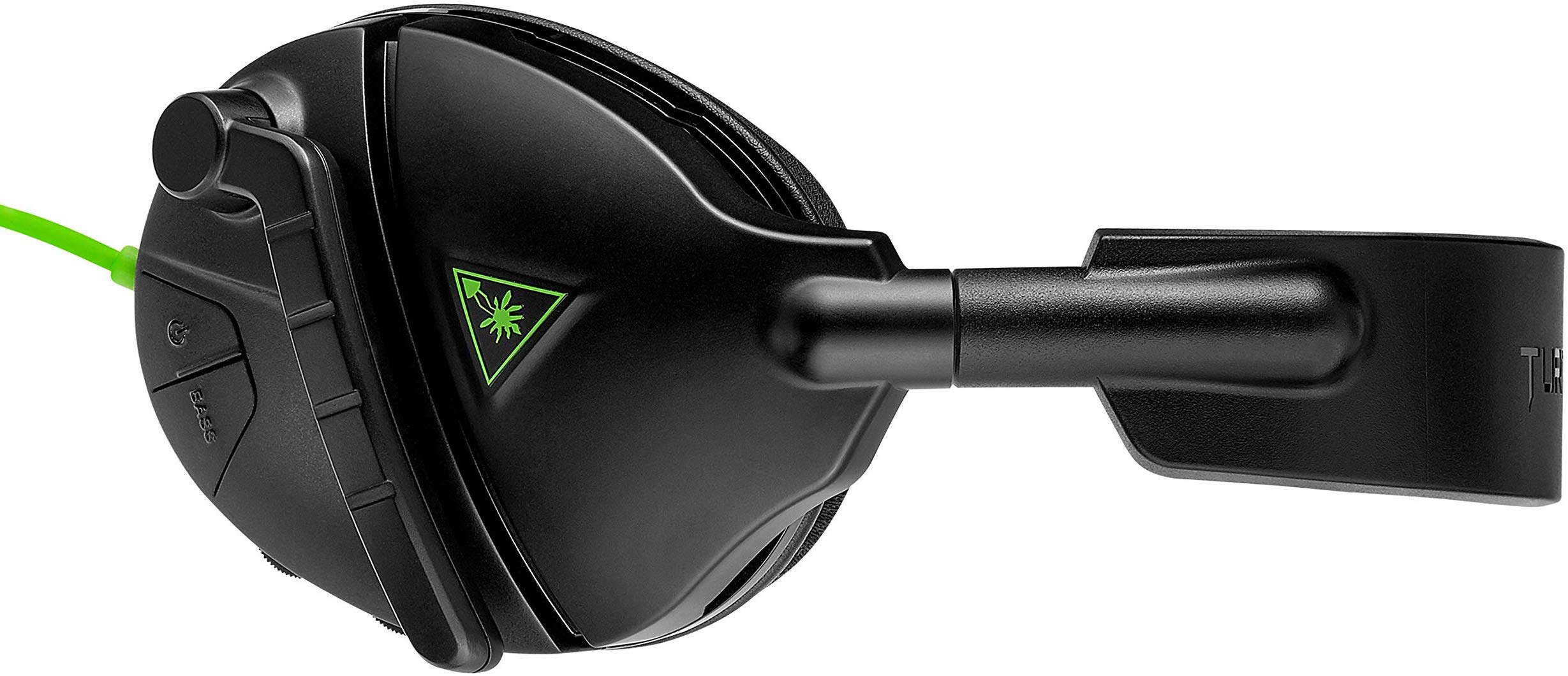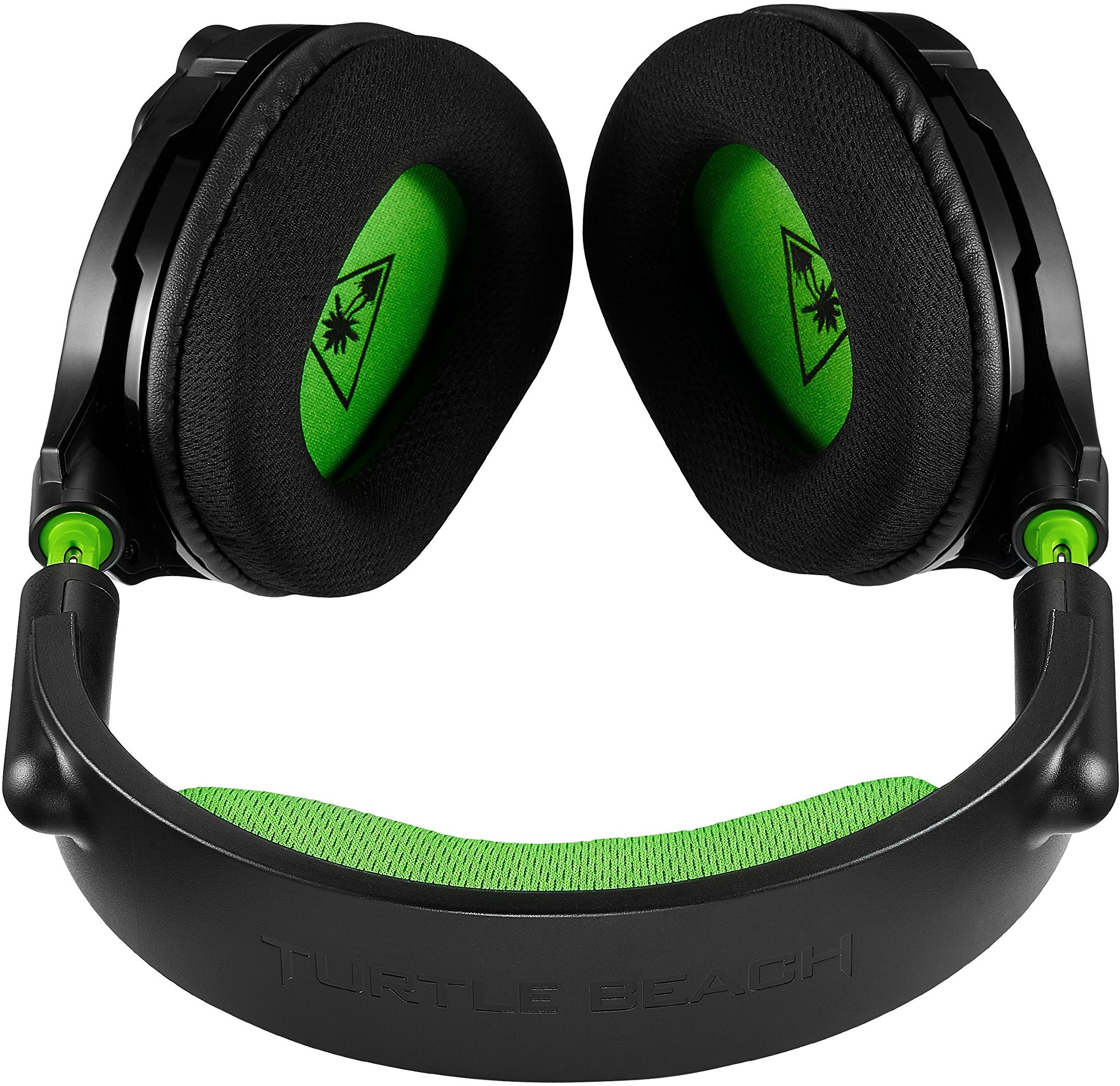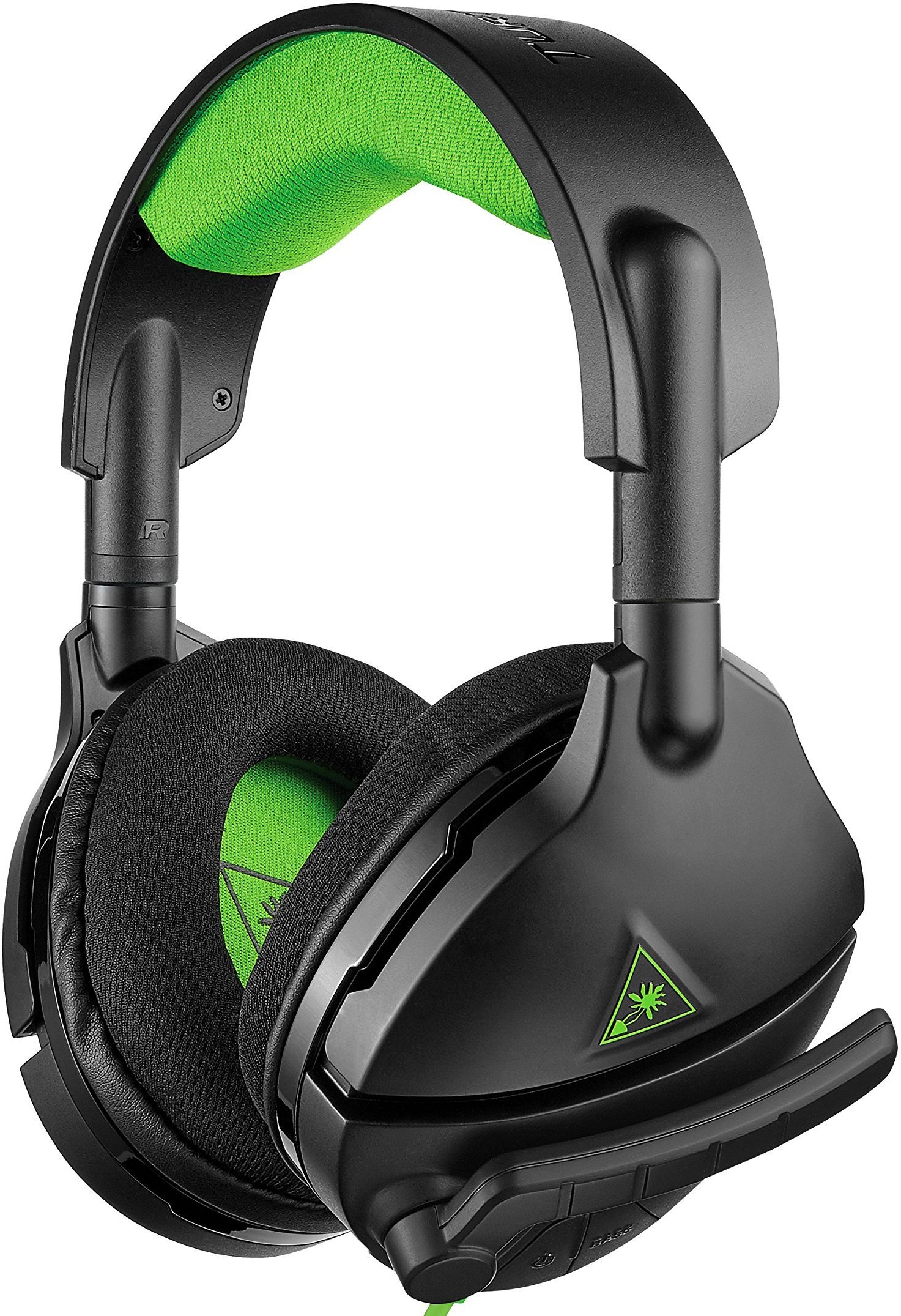Tom's Guide Verdict
The Turtle Beach Ear Force Stealth 300 provides excellent sound for a wide variety of games, but you need to keep it powered.
Pros
- +
Comfortable
- +
Good sound
- +
Works with almost any system
Cons
- -
No unpowered mode
- -
Sound profiles not very distinct
- -
Not enough bass
Why you can trust Tom's Guide
More often than not, you can make a very successful peripheral by taking a simple idea and executing it well. That's the Turtle Beach Ear Force Stealth 300 in a nutshell. This $80 gaming headset plugs in to just about any system with a 3.5mm audio jack and provides excellent sound for a wide variety of games.
Granted, a few small tweaks would have taken the Stealth 300 from good to great. It's not easy to engineer a perfect fit around your head, and having to charge a wired headset before use is a pain. But the Stealth 300 will work with just about any system you can throw at it, and it occupies a comfortable space between cost-cutting $60 headsets and sometimes-overpriced $100 models.
Design
If you're familiar with the Turtle Beach Ear Force Stealth 600 and 700, you'll find the Stealth 300 familiar; it's pretty much the same thing, but with wires. The Stealth 300 is a plain-looking headset, with a black-plastic chassis, fabric over-the-ear cups and a few colored highlights, depending on your system of choice. (The PC variant is red; the PS4 variant is blue; the Xbox variant is green. The devices don't appear to have any differences aside from aesthetics, though, so feel free to pick up your favorite color.)

The device is attractive enough, in an understated kind of way, although a few of the design decisions made me scratch my head. To wit, the left ear cup houses a power button (more on this later), a button to change sound profiles, a volume-control dial and a chat-volume dial. One volume dial is right on top of the other, and if you think that sounds confusing, you're correct.

The power button and sound-mode button also feel almost identical, and they don't have much of a profile, making them hard to pinpoint unless you feel around for a while. (And even then, you might hit the wrong one.)
On the other hand, the microphone (also on the left ear cup) is a little more sensible. While it's not removable or retractable, it folds up neatly against the ear cup, making it (almost) unobtrusive enough to take the headset on your daily commute. You can also swivel the ear cups to fold the headset flat and stash it in a backpack.
Comfort
The Stealth 300 advertises that it uses Turtle Beach's ProSpecs technology to make the ear cups comfortable over a long period, even if you wear glasses. As a bespectacled person, I can vouch that they get the job done. I was able to wear the Stealth 300 for hours at a time, while both gaming and working, and suffered no ill effects.

However, getting a good fit was something of a challenge. There's a steel rod underneath the headband, and you can adjust the headband up and down in order to fit your head. But the notches are extremely rigid, and you'll almost definitely overshoot your goal before having to push and pull the headband a few more times before it comes to rest where you want it to. In the end, I settled for a good-enough fit just because I didn't want to have to go through the process again in pursuit of something perfect.
I handed the Stealth 300 off to a co-worker, who agreed with most of my assessment. He said that the headset was comfortable enough to wear for a few hours at a time and seemed pretty sturdy.
MORE: Best Gaming Headsets - Picks for PCs, PS4, and Xbox
The only potential design flaw I can see is that if you want to use this headset with a PC, the audio cable is not extremely long. But a good extension cord will hardly break the bank.
Gaming Performance
I tried out the Stealth 300 with a bunch of Xbox One games, including Halo 5: Guardians, Hellblade: Senua's Sacrifice, Injustice 2 and Bloodstained: Curse of the Moon. (Side note: If you have not yet played Bloodstained: Curse of the Moon, don't wait on that one.)
For every game, the sound was rich and nuanced, from the 8-bit bleeps and bloops of Bloodstained to the immediate and impactful gunfire in Halo 5. The voices in Senua's head sounded sufficiently menacing, and Batman and Superman's quips and supermoves were all crisp and clear.

When I took the Stealth 300 for a spin with PC, PS4 and Switch games, I had a similar experience. Whether it was highlighting the orchestral score of Baldur's Gate: Enhanced Edition or the transport beams and phaser blasts of Star Trek Online, the Stealth 300 provided balanced, immediate sound.
The Stealth 300's sound is rich and nuanced, from the 8-bit bleeps and bloops of Bloodstained to the immediate and impactful gunfire in Halo 5.
The only real downside is that there's not that much bass, even with the bass mode turned on. I was never a huge fan of gaming headsets that have overwhelming bass, but the emphasis on treble in this headset made firefights lack a certain punch.
Features
As a 3.5mm headset, the Stealth 300 doesn't offer programmable profiles or surround sound, or anything along those lines.

What you get instead is a set of four different sound modes: a balanced "signature" mode, bass boost, treble boost, and bass and treble boost. (As for how "bass and treble boost" differs from "making the whole headset a little louder," your guess is as good as mine.) These sound modes aren't incredibly distinct from one another, and the only one I ever used regularly was bass boost, due to the quiet core bass sound.

But the sound modes also make plain the Stealth 300's biggest weakness: You need to charge it in order to use it. I'm not even slightly opposed to powered, wired headsets, because you can often get some gorgeous sound that way. But most powered headsets also offer an unpowered mode so that you can continue listening to music if you suddenly run out of juice, or even while you charge them. The Stealth 300 doesn't offer this feature. If you run out of power in the middle of a game, you're going to have to stop and recharge the headset before you can listen again.
If you run out of juice in the middle of a game, you're going to have to stop and recharge the Stealth 300 before you can listen again.
The mic is a bit on the quiet side (it doesn't sit very close to the mouth, and you can't adjust its position much), but it provides clear sound. My only concern is that a normal speaking voice might get lost in a heated multiplayer match, but if you're willing to project a little, it shouldn't be a problem.
Music Performance
For an $80 headset, the Stealth 300 plays music acceptably well. I listened to tracks from Black Sabbath, The Rolling Stones, Nickel Creek and J.S. Bach. While the treble-heavy sound wasn't a boon in every genre, all the music was audible, clear and balanced. Hard-core audiophiles would probably still need to purchase a second set of headphones, but if you want to listen to music while you read a book or watch a show on Netflix without waking up your significant other, this headset will get the job done.
Bottom Line
The Stealth 300 is exactly what an $80 headset should be. In spite of a few design missteps (only one of which is serious), it provides comfort, good sound and a simple setup. If you went out this afternoon and bought a Stealth 300, you would spend more time getting it out of the box than you would figuring out how to use it.
For the same price, the SteelSeries Arctis 3 is also a good investment. And if you're willing to spend $20 more, the HyperX Cloud Alpha is a worthwhile competitor. Otherwise, the Stealth 300 is a smart choice for console users with less than $100 to burn. Just give some thought to your favorite color.
Credit: Turtle Beach
Marshall Honorof is a senior editor for Tom's Guide, overseeing the site's coverage of gaming hardware and software. He comes from a science writing background, having studied paleomammalogy, biological anthropology, and the history of science and technology. After hours, you can find him practicing taekwondo or doing deep dives on classic sci-fi.



